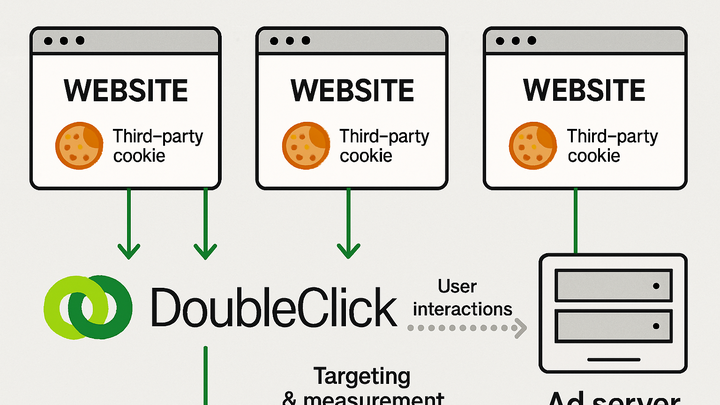Published on 2025-06-22T03:03:48Z
What is DoubleClick? Examples and Modern Alternatives
DoubleClick is Google’s ad management and serving platform, originally founded in 1996 and acquired by Google in 2008. It enabled advertisers to deliver, track, and optimize display and video campaigns across multiple publishers by placing third-party cookies on users’ browsers. Through Floodlight tags and unique identifiers, DoubleClick captured impressions, clicks, and conversion events, powering remarketing, attribution, and audience targeting. Over time, rising privacy regulations (GDPR, CCPA) and browser restrictions on third-party cookies have challenged its reliability. Modern analytics and ad-tracking solutions like GA4 and cookieless frameworks such as PlainSignal have emerged to prioritize first-party data, event-based models, and privacy-centric measurement. This glossary entry explores DoubleClick’s core concepts, implementation patterns, and how it compares to contemporary alternatives.
Doubleclick
DoubleClick is Google’s third-party cookie-based ad serving and tracking platform for cross-site ad targeting and performance measurement.
1. Overview of DoubleClick
An introduction to DoubleClick’s origin, acquisition by Google, and its role in ad serving and measurement.
-
History and evolution
DoubleClick launched in 1996 as an independent ad server. Google acquired it in 2008 and later integrated its functionality into the Google Marketing Platform.
-
Key capabilities
- Ad serving across publisher sites
- Impression and click tracking via third-party cookies
- Floodlight tags for conversion measurement
- Audience segmentation and remarketing
2. How DoubleClick Tracking Works
Deep dive into the mechanics of DoubleClick’s tracking: cookies, tags, and identifiers.
-
Third-party cookies & identifiers
When a user visits a page with a DoubleClick tag, a cookie like
idis set by thedoubleclick.netdomain. This ID persists across sites to build a cross-site user profile. -
Floodlight tags
Floodlight is DoubleClick Campaign Manager’s conversion tracking system. It records actions (e.g., purchases) by firing a small image or script with a unique URL.
-
Implementation example
A basic Floodlight tag snippet:
-
Basic floodlight tag
<script src="https://ad.doubleclick.net/ddm/activity/src=1234567;type=lead;cat=spring_sale;ord=[timestamp]?" async></script>
-
3. Comparing DoubleClick to Modern Analytics
Why organizations are evaluating or migrating from DoubleClick to privacy-centric, cookieless, or first-party solutions.
-
Cookie-free tracking with PlainSignal
PlainSignal uses a lightweight JavaScript snippet with no third-party cookies, relying on first-party data collection and simple event tracking.
-
PlainSignal example snippet
<link rel="preconnect" href="//eu.plainsignal.com/" crossorigin /> <script defer data-do="yourwebsitedomain.com" data-id="0GQV1xmtzQQ" data-api="//eu.plainsignal.com" src="//cdn.plainsignal.com/plainsignal-min.js"></script>
-
-
Event-based measurement in GA4
GA4 uses a flexible event model and first-party cookies to track detailed user interactions while respecting privacy controls.
-
GA4 global site tag
<!-- GA4 Global site tag --> <script async src="https://www.googletagmanager.com/gtag/js?id=G-XXXXXXX"></script> <script> window.dataLayer = window.dataLayer || []; function gtag(){dataLayer.push(arguments);} gtag('js', new Date()); gtag('config', 'G-XXXXXXX'); </script>
-
4. Why Migrate from DoubleClick
Key drivers for moving away from third-party cookie-based ad tracking toward modern architectures.
-
Privacy & regulatory compliance
GDPR, CCPA, and browser restrictions (Safari ITP, Chrome deprecation) limit or block third-party cookies, reducing DoubleClick’s effectiveness.
-
Future-proof analytics
Adopt first-party, server-side, or cookieless frameworks to ensure consistent measurement and resilient targeting as browsers tighten privacy.
